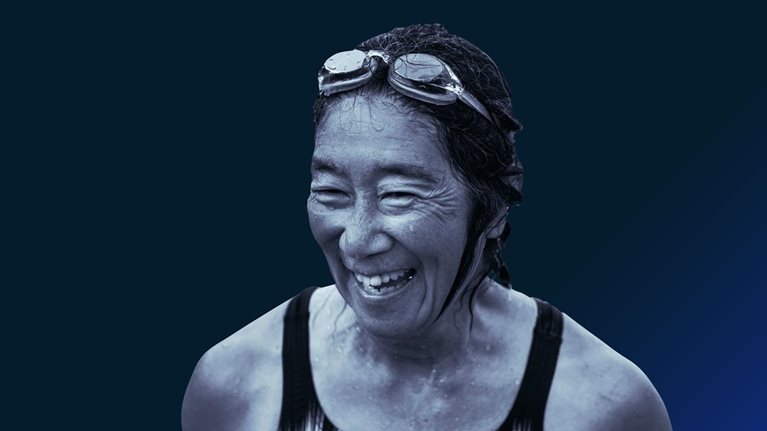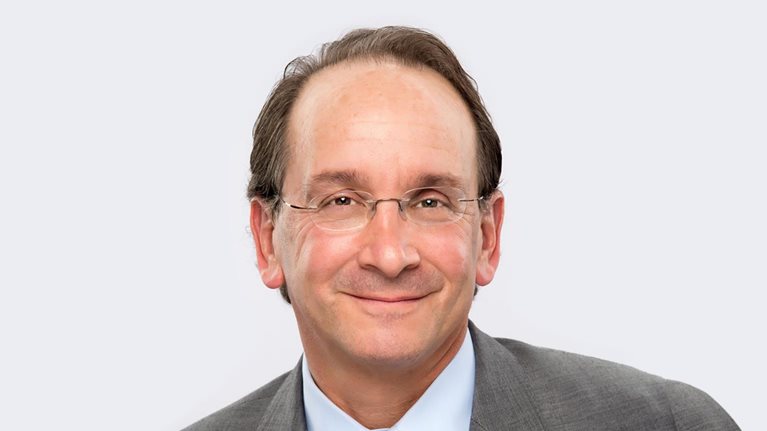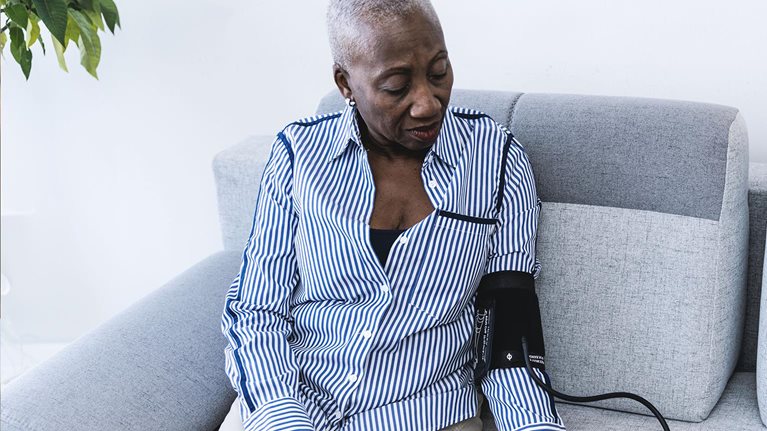As coronavirus-infection rates have fluctuated in countries around the world, governments have been tested by complex decisions: how to test for the disease and trace its spread, how to treat patients who need different levels of care, and when and how to reopen businesses and schools. Healthcare providers, hospitals, and clinics, too, have come under pressure as they manage surges in the number of COVID-19 infections while still helping patients with other conditions.
Ara Darzi has been at the center of several efforts to meet these challenges in the United Kingdom. With colleagues at Imperial College London, where he directs the Institute of Global Health Innovation, Darzi helped create a program to deliver thousands of COVID-19 self-testing kits to people across the country. The test results informed UK officials as they considered whether to lift lockdown orders. A practicing surgeon, Darzi joined frontline healthcare workers in treating patients with COVID-19 in the intensive-care unit (ICU) of a London hospital—an experience he described as “alarming.” But he also says that the COVID-19 crisis has ushered in an opportunity to change the healthcare system for the better. He recently joined McKinsey’s André Andonian to discuss the system’s response to the pandemic and the possibilities for reform that have come into view. Their discussion, condensed and edited, follows.
McKinsey: The number of daily new COVID-19 cases in the UK has dropped greatly from where it was in early March. The government has also eased many of its lockdown rules. How can the UK keep case numbers down?
Ara Darzi: The virus, in the first wave, was chasing us to the hospital and to intensive care. We need to change that mindset and start chasing the virus in the community. Testing and tracing will provide us with that. We have still a lot of restrictions. But very gently, we are opening a lot of activities. And as we do, we’re significantly increasing our testing program and launching the test-and-trace program.
We have two very large studies. The first is REACT-1 [Real-Time Assessment of Community Transmission program, part one], with the antigen test for the virus. We are running 150,000 tests now. Potentially, that has to happen every two weeks. We’re gathering data at the level of 315 local authorities, so it’s a really deep dive, as granular as we can do. That feeds into policy making—obviously, we report this to the government.
McKinsey: What about the antibody-testing program?
Ara Darzi: The challenge we had during the lockdown with the antibody testing was that most of the tests are designed as finger-prick tests, no different than HIV or diabetes tests. But these have been designed to be used under clinical supervision rather than home use. So as part of the REACT-2 study, we needed to do a big public-engagement exercise—developing the educational materials and the videos, deciding what lancet we can use at home, putting the buffers together.
So eventually we cracked this, and we sent out 10,000 of these tests purely to determine usability. We wanted to see whether it’s doable at home. And to our surprise, with clear instructions, 97 percent of the people who received the test managed to complete the test. Obviously, these results come with some warnings because we all know the sensitivity and specificity of these tests are not great at this time, though they are improving rapidly.
The one we picked up eventually has a sensitivity of about 90 percent and a specificity of 99.8 percent, which is good. The last thing we want to tell anyone is that they’ve had an infection, but in actual fact, it’s a false positive. So we’re now about to embark on a very large, 150,000-person study, again using these lateral flow tests for antibodies.
McKinsey: You also spent time treating COVID-19 patients in an ICU. What was that like?
Ara Darzi: When the lockdown happened—or just before, when the number of cases coming to the hospital was dramatically increased, and then the lockdown was announced—I found myself unemployed. Suddenly, everything stops. No one wants to have an operation. The university shut down. They all went home. So you know, I was looking at all of this and said, “Well, I better do something.”
I managed to come to the hospital to see what’s happening. And obviously, the pressure in the ICU was huge. They were short of staff. The other thing that I witnessed was the fear of many people working in the health service, certainly in my own institution. That fear was compounded with issues about personal protective equipment [PPE]—a lack of it, sometimes—or the availability of testing for people who were working in the hospital. So I essentially said, “Well, I better go and work in the ICU.”
Now, I’m a surgeon. The last time I managed a ventilator, I was in medical school. So the first thing I had to do was to go and join a ventilator course, which took about four or five hours, and read the books and do the whole thing. Then, obviously, I had to go and train on how to wear the PPE because it’s slightly different than the gowns that I wear in the operating theater.
I went in. It was a strange feeling. What’s so strange about it is that I ordinarily go to the ICU every two weeks or so because I have a patient who has a big, complex operation. And then I see someone who’s had a coronary-artery-bypass graft, someone who’s had trauma. But here, every single patient was COVID, COVID, COVID. I’ve never seen anything like that, ever. And I’ve been in healthcare from my medical-student days. Alarming. Truly, truly alarming.
McKinsey: What did that experience teach you about how we treat COVID-19?
Ara Darzi: We need to develop a pathway of care at home so it’s no longer “you’re positive, go and isolate for a week, and if you’re OK, then you can leave in two weeks.” Because, obviously, there are some people—and we can risk-stratify that population—who by day five or six may deteriorate. And we need to be proactively on top of that.
We’re designing pathways of care using a pulse oximeter—to be given to the individual after risk stratification—connected through Bluetooth to a phone, to central monitoring. If there’s any desaturation from a healthy oxygen level, then we can at least intervene.
I also believe we might push some of the therapeutics out in the community. There are reports from some parts of the world about even giving noninvasive oxygen at home as long as they can keep close monitoring. We could get more involved in monitoring and delivering care rather than having patients deteriorate and then present to the hospital as very sick, needing intensive care.
McKinsey: Expanding at-home-care options often gets mentioned as a way to improve the healthcare system. Stepping back from COVID-19 for a moment, what other changes might improve the healthcare system?
Ara Darzi: Our healthcare system, like all health-care systems, is designed as a “sickness service” rather than a “health and well-being service.” The value proposition has been treating the sick. But the value proposition has to change, in fact, to preventing illness.
To be fair, we’ve been practicing this for centuries. Go back to the Victorian era. I’ve always said Queen Victoria was the greatest innovator of public health. Changing the whole sewage system got rid of many, many illnesses of the day. We’ve also championed vaccines and all sorts of other interventions.
But we have many other pandemics—only we don’t call them pandemics. We have the pandemic of obesity. We have the pandemics of cardiovascular disease and of diabetes. And the only way we’re going to address these pandemics is with the same way of thinking: What can we do to get rid of this disease?
McKinsey: What would that approach require in practice?
Ara Darzi: If you look at the expenditure we put in health and well-being, it’s about 1 percent or 2 percent of the budget. That’s a tiny fraction. Imagine spending 1 percent or 2 percent of your overall budget to prevent disease that would cost you, probably, 100 times more in terms of treating it. This is very much Noubar Afeyan’s1 idea, but I’ve always embraced it because the UK health system is based on that, although it is not necessarily practiced to its maximum.
We really need to look at this whole concept of health security. How could we detect the pre-illness phase, and how could we intervene at that pre-illness phase? Now, if we increased our budget allocation to 10 percent, we’d actually be spending about $800 billion a year. That’s a huge market by global standards and will embrace and drive through innovations.
McKinsey: What have we learned from the COVID-19 pandemic that might accelerate these kinds of changes?
Ara Darzi: I think the world has struggled with health reform. Although we mostly know what we need to do, change in any healthcare system is a very painful process. It takes time. I’ve always said it needs to have the evidence base to support it. It needs to be clinically led. Even with that, change is slow.
I think if there is one silver lining from the COVID-19 pandemic, it is that we have discovered, overnight, we can actually deliver a lot of healthcare in a very different way. We’re running clinics now using all sorts of IT tools that everyone would have shied away from in the past. So I think there’s been a lot of learning done during the COVID-19 pandemic. The critical bit is to learn from this and make the changes now because if we go back to where we were before—which I doubt will happen, by the way—it would be even more difficult to change.
I’m optimistic that we will use this opportunity to do a significant amount of reform and embrace technology at a much quicker speed.
Comments and opinions expressed by interviewees are their own and do not represent or reflect opinion, policy, position, or endorsement of or by McKinsey.


